Here Are the 29 Best Restaurants in France, According to Michelin

Michelin has almost become as emblematic of French fine-dining landscape as the cuisine itself. While today we may think of the guidebook as a comprehensive tastemaker, the Michelin Guide’s goal in 1900 when it launched was much simpler: to drive local tourism.
At a time when there were fewer than 3,000 automobiles in all of France, the Michelin Guide was designed to highlight hotels and restaurants in such a way that would encourage motorists to make the trek—presumably wearing out their tires in the process. In 1926 the guidebook began awarding stars, and by 1936, Michelin had adopted its criteria for the tiered ratings. One star indicates a “very good restaurant in its category,” two stars translate to”excellent cooking, worth a detour,” while the coveted three stars mean a restaurant offers “exceptional cuisine, worth a special journey. Those ratings have been inextricably linked to Gallic gastronomy.
More from Robb Report
Prior to the pandemic, the hallowed guide experienced upheaval to the old order. In 2019, Auberge de L’ill lost its third star after holding it for 51 years. And last year Paul Bocuse’s L’Auberge du Pont de Collonges was demoted two years after his death, sending shockwaves through the French culinary community. That continues this year as legendary chef Guy Savoy’s two-decade run with Michelin’s highest honor came to an end as his Parisian restaurant was demoted to two. It wasn’t all bad news as La Marine joined the ranks of Michelin three-star restaurants. Chef Alexandre Couillon can now be mentioned in the same breath as culinary legends from Anne-Sophie Pic to Alain Ducasse to Alain Passard. Here are France’s 29 Michelin three-star restaurants for 2023.
Alléno Pavillon Ledoyen, Paris, 8th Arrondissement
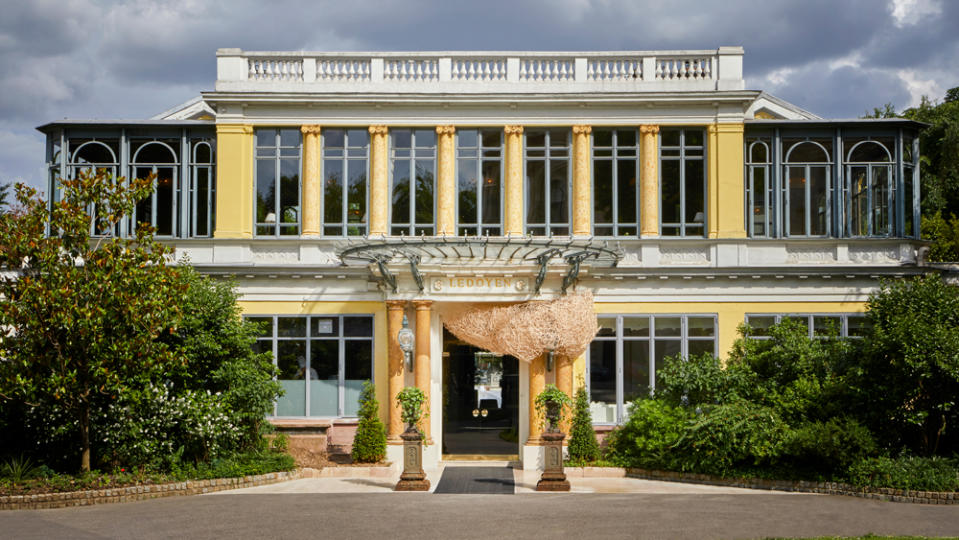
Pavillon Ledoyen’s deep Parisian roots date back to 1842, when the restaurant was first erected in the Champs-Elysées’ gardens. While you can catch a glimpse of the original painted moldings and ceiling in the upstairs dining room, chef Yannick Alléno, who took over in 2014, brings a modern sensibility to the historic site, which earned the spot a third Michelin star just seven months after he started. Alléno’s pet technique for making sauces are “extractions.” This entails first extracting liquids from ingredients and then reducing them using a technique called cryoconcentration, which involves a combination of sub-zero temperatures and centrifugal force. Diners can enjoy the fruits of this methods in dishes like a dessert that features a coffee-flavored fir-tree extraction jelly.
Am par Alexandre Mazzia, Marseille
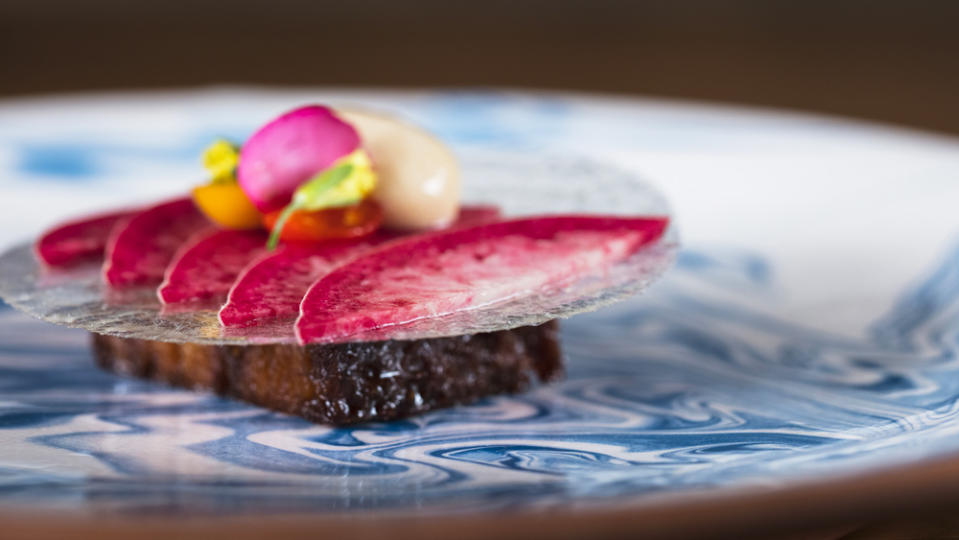
Chef Alexandre Mazzia’s eponymous restaurant draws inspiration not just from the produce and seafood available in France’s Cote d’Azur, this 24-seat restaurant boasts influences from beyond its Marseille home. Mazzia spent his first 14 years living in the Democratic Republic of the Congo, and before his culinary career, the chef was professional basketball player. His restaurant opened in 2014, earning its first star soon after. He’s become known for unique, globally inspired compositions that have made him beloved in the chefs world, like his scorched mackerel satay with tapioca, wasabi sorbet, red métis; or his marinated egg yolk with lemon panais, combawa mais granité and tarragon.
Arpège, Paris, 7th Arrondissement
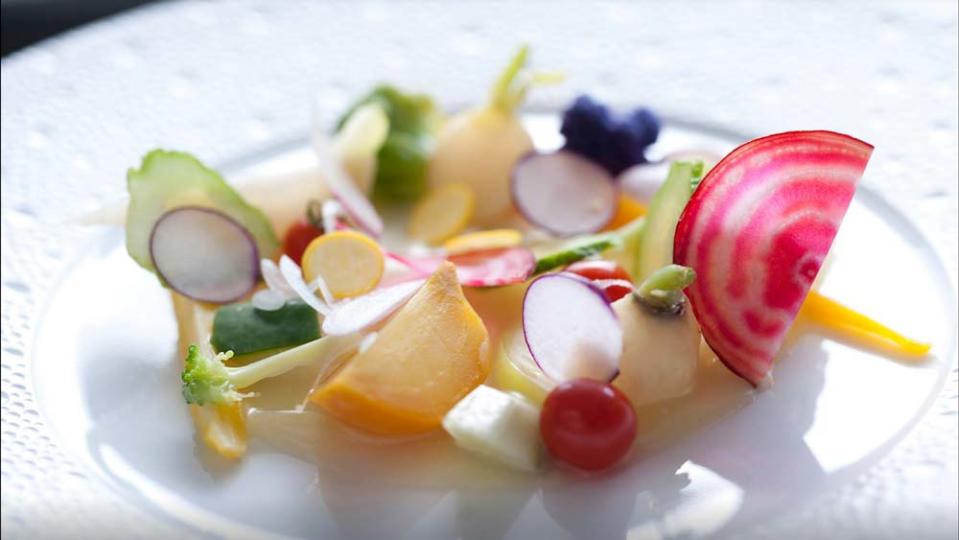
Today, there are few chefs quite as influential as Alain Passard, but back in 1986 he was simply trying to fill his mentor Alain Senderens’ big shoes. That’s the year Passard took over Senderens’ restaurant Archestrate. Passard renamed his new venture, Arpège, the French word for arpeggio, a name that like the establishment’s original name (which means orchestra en francais) pays tribute to his second love: music. Before arriving at Arpège, Passard cut his teeth at the Duc d’Enghien at the Casino of Enghien and the Carlton in Brussels, where he was awarded his first Michelin stars. Arpège earned its third in 1996 and has held onto them ever since—even after adopting a plant-centric menu in 2001. Guests can sample the signature dishes that put Passard on the map, such as his famous l’arpège egg—the hot-cold, hard-soft boiled amuse bouche you’ll now find tributes to at fine-dining restaurants around the globe.
Assiette Champenoise, Tinqueux
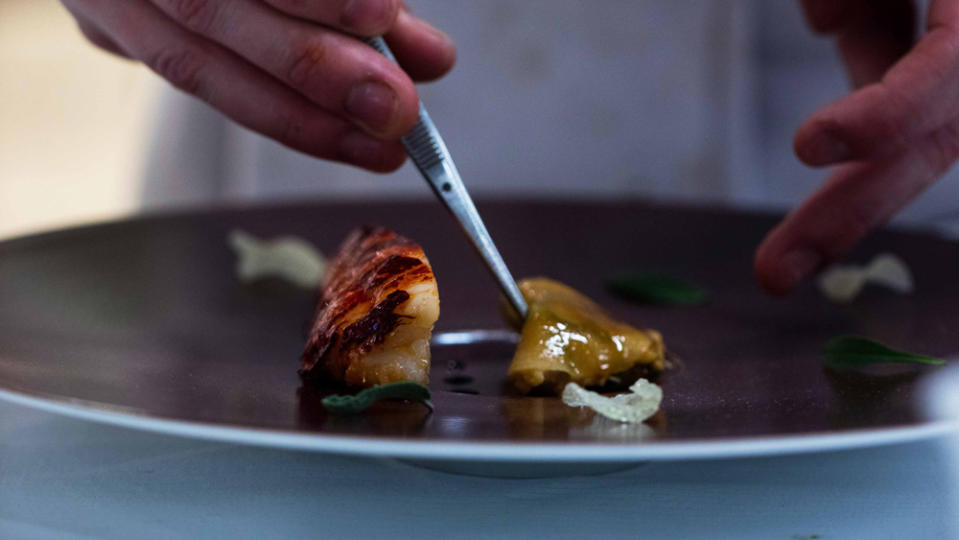
Chef Arnaud Lallement’s fate as a chef seemed predestined. As a child, he watched his father Jean-Pierre, who ran the family restaurant starting in 1975. Then, after studying under culinary legends, like Roger Vergé and Michel Guérard, Lallement took over at the helm in 1998. There, he won L’Assiete its second Michelin star in 2005 and its third in 2014. The menu boasts classic dishes (such as grated foie gras served over fois gras toast), as well as unique novel ones (milk-fed veal sweetbreads), but always with a focus on bringing out the pure flavors of the ingredients with just the right balance of acidity (Lallement’s mantra is “mangez vrais,” which translates to, “eat true”). And, as you’d expect from the region, there are more than a thousand champagnes in the cellar for you to sip with your meal.
Auberge du Vieux Puits, Fontjoncouse
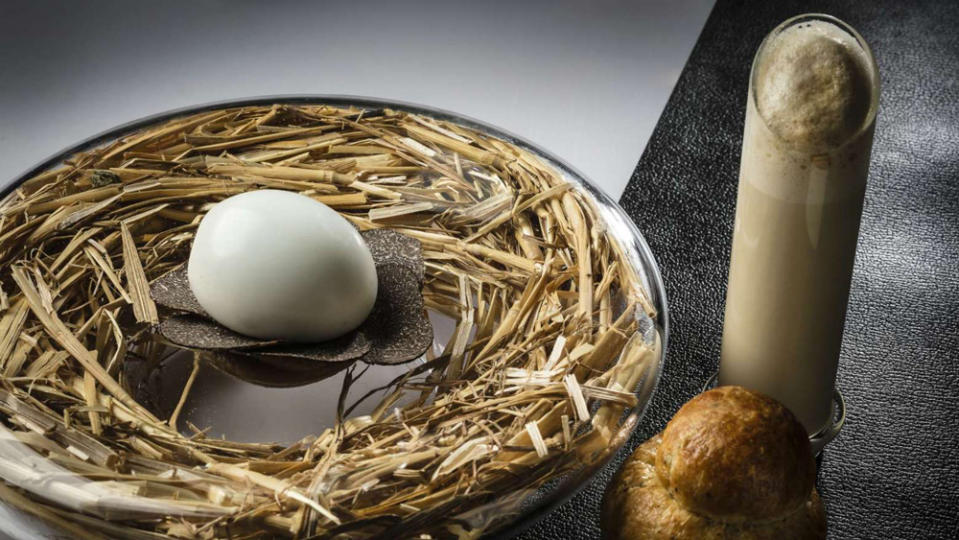
Chef Gilles Goujon rise to Michelin stardom is the stuff of heartwarming movies. In 1990, he bought L’Auberge de Vieux Puits in the small village of Fontjoncouse for 34,000 euro, after its previous three owners had failed to turn a profit. For five years he struggled to attract diners. But his fortune turned in 1996 when he won the “Best Worker of France,” a prestigious award given out every four years to artisans in different categories. Shortly after, he snagged his first Michelin star in 1997. He won his second star in 2001 and his third in 2010.
Epicure, Paris, 8th Arrondissement

While many Michelin-star-winning chefs could be considered culinary royalty, Epicure’s chef Eric Frechon bears an additional, extra-official-sounding honorarium. He was decorated as a Knight of the Order of the “Légion d’Honneur” by Nicolas Sarkozy in 2008—just a year before he was first awarded three Michelin stars. The self-described “control freak” prides himself on his ability to elevate simple—even cheap—ingredients into Michelin-star-worthy fare. Though, there’s no shortage of decadence on his menu. You’ll find classic French cuisine, such as whole roast chicken cooked in a pig’s bladder (a signature dish) and black truffle, artichoke, and foie-gras stuffed macaroni.
Flocons de Sel, Megève
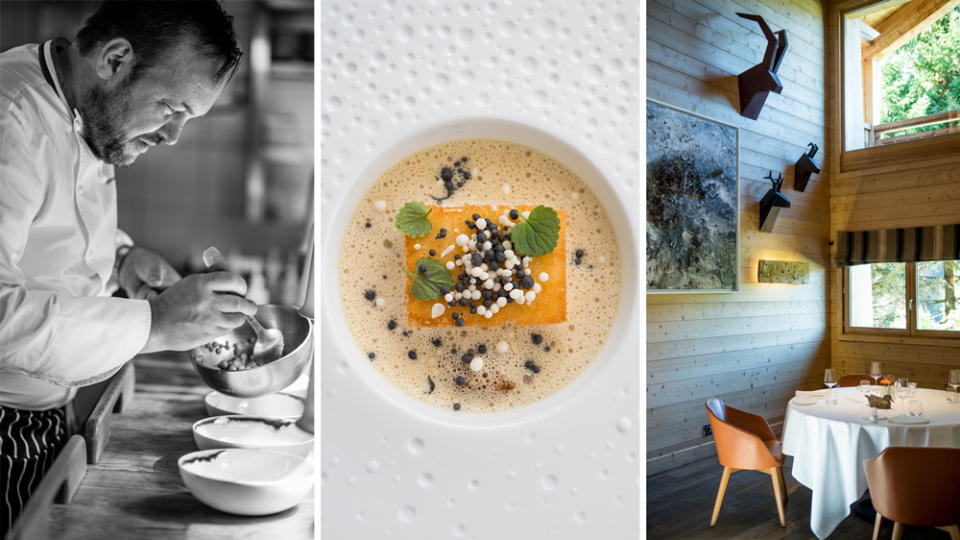
Nestled in the French Alps, Flocons de Sel offers a taste of the mountains. Chef Emmanuel Renaut scours the hillsides for herbs and mushrooms to adds to his dishes. He also takes a twice-yearly sojourn with award-winning cheesemaker Jacques Dubouloz through local farms and pastures in pursuit of the very best cheese. Just don’t expect to see fussily prepared cheese dishes at Folcons de Sel: When it comes to le fromage, Renaut is a purist. You’ll find all 20 of the menu’s hand-selected cheeses in their natural state. “I don’t like to cook with cheeses. I think it’s a waste,” he once remarked.
Georges Blanc, Vonnas
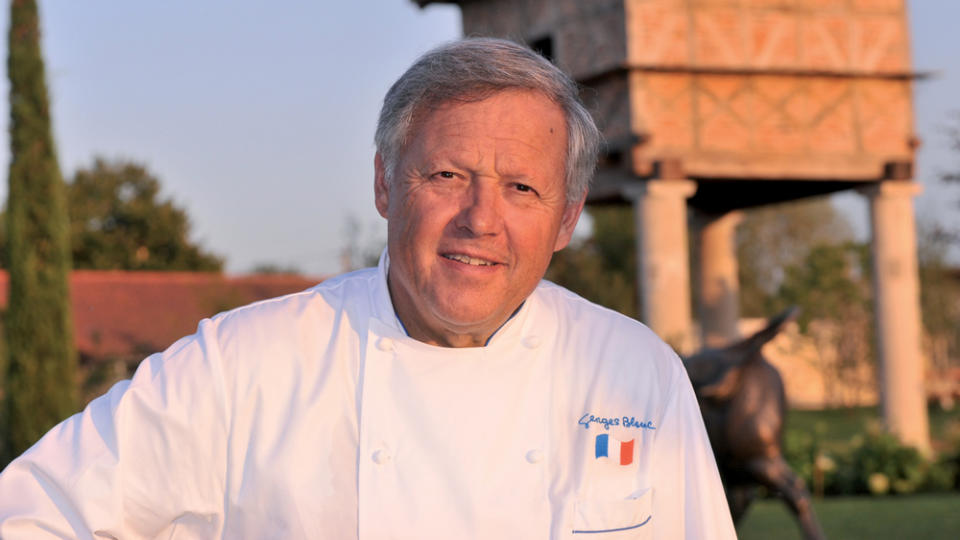
Going on 38 straight years of three Michelin stars, Georges Blanc—both the chef and the restaurant—is a French culinary fixture. While Blanc sharpened his technique in restaurants in France and abroad (as well as during a stint as a military cook) it’s hard not to think that some of his talent might be hereditary. Three generations of cooks preceded him, including his grandmother, who was once named the “best cook in the world,” by a food writer. Blanc took the reins from his mother in 1968, before turning the family business into a luxury hotel in the ‘70s.
Kei, Paris, 1st Arrondissement
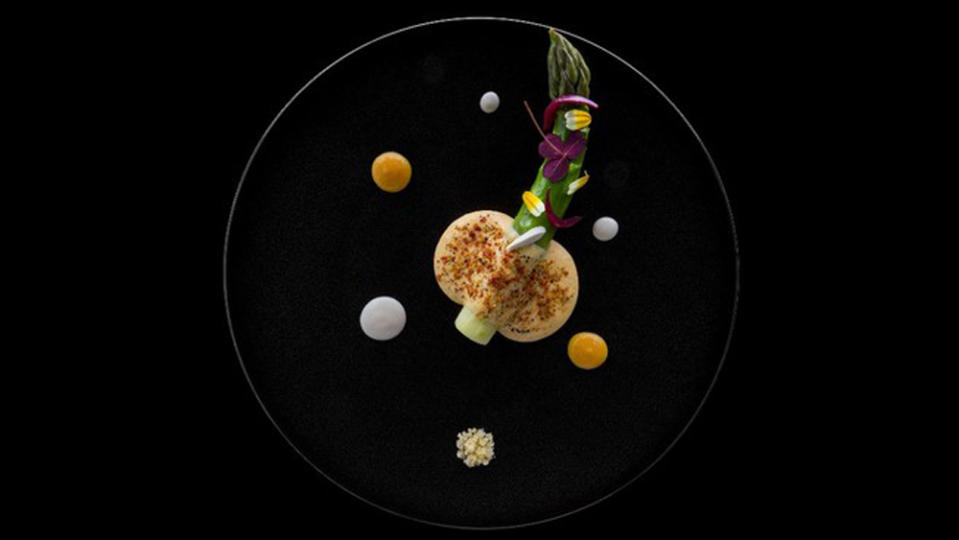
The newest Michelin three-star recipient in the City of Lights is also the first ever Japanese chef to nab the honor in France. Kei Kobayashi was born in Nagano before moving to France to cook. He’s serving dishes like foie gras with green apple jelly; potato gnocchi with truffle, parmesan emulsion and Iberian ham; and salmon with a bitter sorrel cream with raw and cooked vegetables. While his menu has an influence from his Japanese roots, he’s quite taken with modern French cuisine.
La Marine, Ile de Noirmoutier
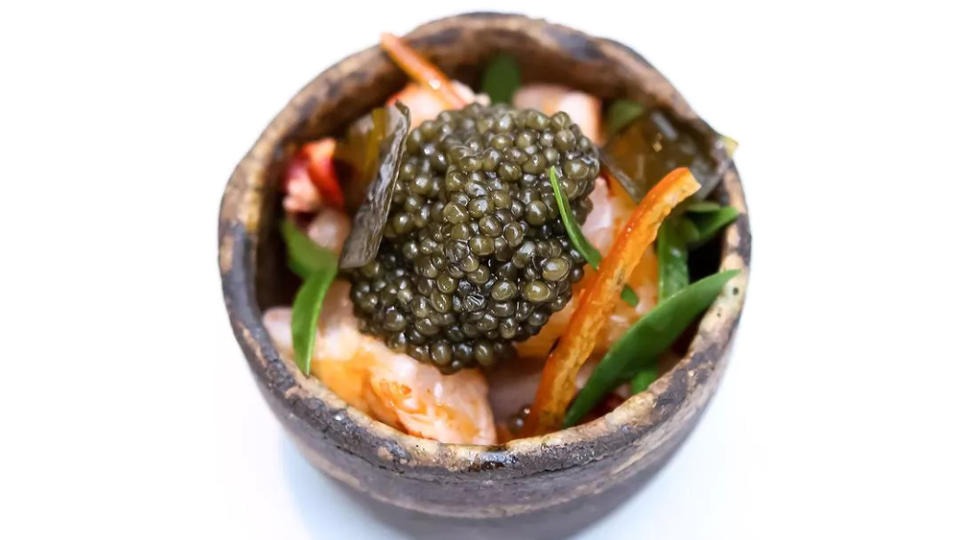
When La Marine joined the ranks of three-star restaurants in 2023, Michelin’s inspectors said that chef Alexandre Couillon’s ocean-focused cuisine, which spotlights seafood and edible coastal plants, asserted La Marine as one of the very best restaurants in all of France. The guide called his style of cooking both striking and bold, calling out his “braised artisanally fished mackerel, beetroot and parsley foam” and the “crispy buckwheat dessert, caramel mousse, candied citrus fruit and sea lettuce sorbet.”
L’Ambroisie, Paris, 4th Arrondissement
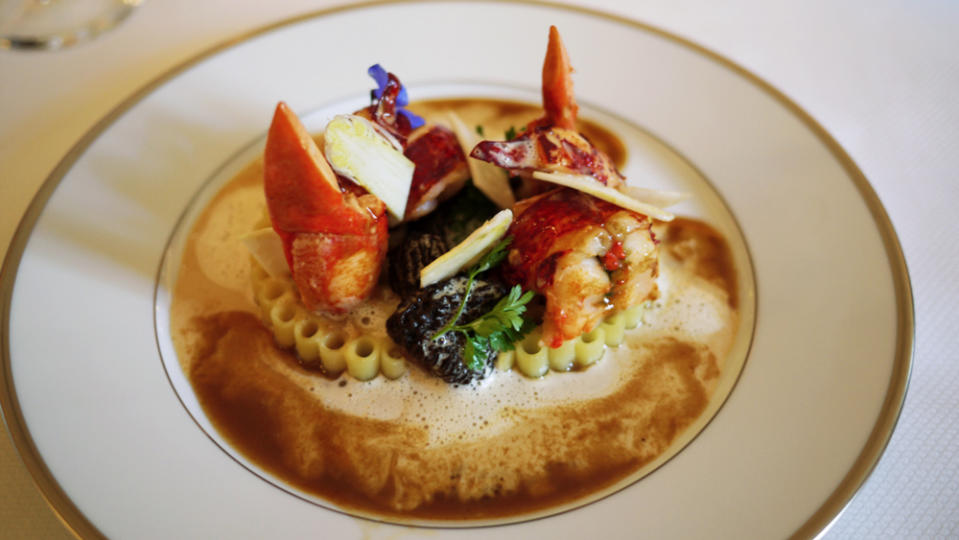
Abandoned by his parents and placed in an orphanage at 13, chef Bernard Pacaud found salvation in the kitchen of Eugénie Braizer’s Col de la Luère. The three-star-winning Lyonnais chef took Pacaud under her wing, providing him with both a roof over his head and a place to learn the craft. First nabbing his own third star in 1988, Pacaud has been holding onto the stellar Michelin rating for longer than any of Paris’s other three-star restaurants. L’Ambroisie lives up to its name which means “food of the gods” with its lavish, stunningly plated dishes like sea bass and artichoke served atop caviar. And even if the gods don’t literally dine there, some pretty powerful mortals do: In 2015 presidents Barack Obama and Francois Hollande enjoyed a working dinner at L’Ambroisie.
L’Oustau de Baumanière, Baux-de-Provence
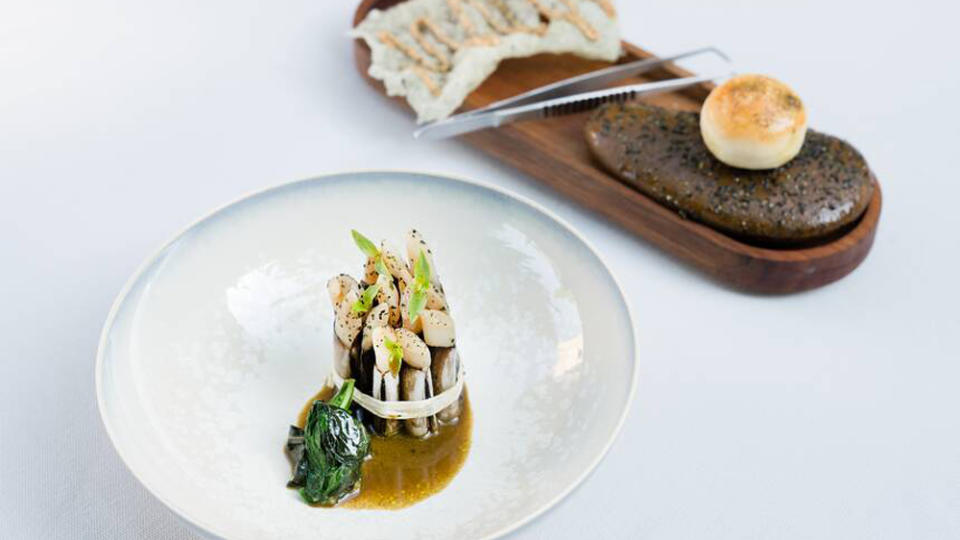
When the Michelin Guide bestowed its third star on the restaurant at L’Oustau de Baumanière, it said of chef Glenn Viel that “organic vegetables from the garden of Baumanière, along with lamb, chicken and pork, each ingredient of the rich local produce finds its meaning and its true flavors in the hands of the chef.” Viel is merging local ingredients and traditional technique with modern flourishes like serving frog’s leg with puffed rice.
La Vague d’Or, Saint-Tropez

Arnaud Doncklele’s impressive resume includes apprenticeships in the kitchens of Alain Ducasse and Michel Guérard, so it’s hardly a surprise that the young chef achieved three Michelin Stars by the time he turned 35. La Vague D’Or offers three tasting menus, including the seven-course “Balade Epicurienne” for adventurous diners and a five course vegetarian option. There’s also two à la carte menus: one inspired by land and one inspired by the sea—which happens to be within view of restaurant’s umbrella-lined terrace, by the way.
La Villa Madie, Cassis
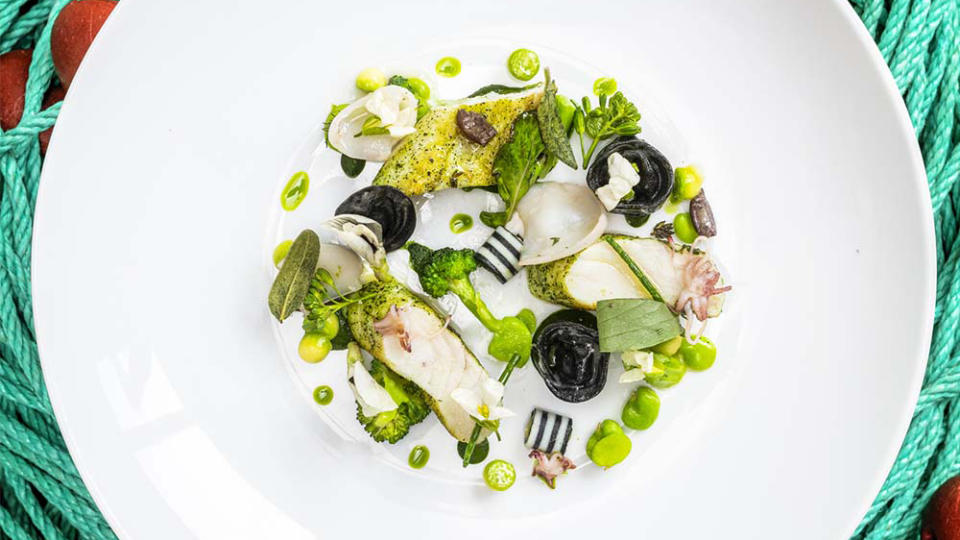
Joining the ranks of the three-stars in 2022, La Villa Madie has focused on Mediterranean fare under the leadership of Dimitri and Marielle Droisneau since 2013. Tucked in the south of France, overlooking the pristine blue waters, the local seafood and flora take center stage. When it comes to Dimitri’s cooking, the guide is effusive: “From one dish to another, it makes its presence felt—light, subtle, tasty, fresh and aromatic, punchy when necessary, and always surprising and original.”
Le 1947 at Cheval Blanc, Courchevel

Yannick Alléno has performed the chef’s equivalent of a hat trick, having earned three triple-star Michelin restaurants over the course of his career. Ten years after his three-star win at Le Meurice, and three years after earning three stars at Pavillon Ledoyen, Michelin awarded him stars for Le 1947 at Cheval Blanc in 2017. The Alpine outpost’s sleek, modern surroundings—which include a perforated sphere through which diners can watch the chefs work—set the tone for the nine-course menu that puts a creative spin on French cuisine. Le 1947 is named for Chateau Cheval Blanc’s most renowned vintage and aims to provide guests with an experience just as covetable.
Le Cinq, Paris, 8th Arrondissement
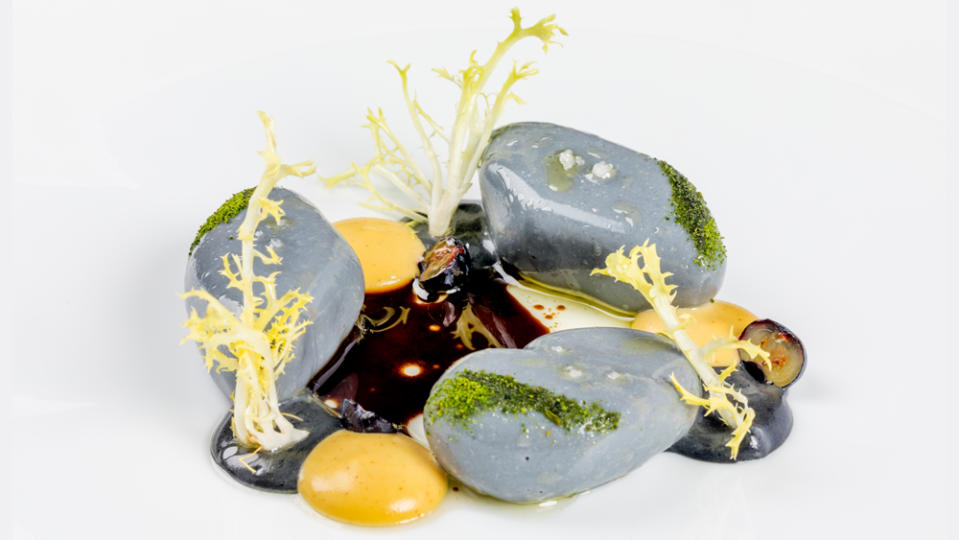
From within the Four Seasons Hotel George V, chef Christian le Squer combines nostalgic French flavors with ambitious new techniques. “My cooking is like a Chanel suit worn over a pair of jeans,” he once said. You can taste this amalgam in dishes like his Parisian-style gratinated onions or line-fished sea bass served with caviar and buttermilk (a nod to growing up near the Morbihan sea in Brittany). “His signature is all over the superb dishes, mastered to perfection and demonstrating exceptional skills and a deep knowledge of the very best produce,” the former director of the Guide, Michael Ellis, said when the 2016 Michelin Guide was released. “Each of Christian Le Squer’s dishes is a true work of art, a shining example of the best of French gastronomy.” Prior to racking up stars at Le Cinq in 2016, Le Squer enjoyed 12 consecutive years of three-star glory at Pavilion Ledoyen.
Le Clos des Sens, Annecy-le-Vieux

Perched near Lake Annecy in the French Alps not far from the Swiss border, Le Clos des Sens is a manor built back in 1866. Laurent Petit leads the Michelin three-star restaurant inside the inn and he draws heavily on the region around him. His food features the crayfish, arctic char and other seafood from the surrounding lakes, including Annecy. As well as ingredients from the garden he’s built at the manor. His culinary education began early, as Petit grew up the son of a butcher and as a young chef cooked for the legendary Michel Guérard, a founder of nouvelle cuisine.
Le Louis XV—Alain Ducasse à l’H?tel de Paris, Monte Carlo
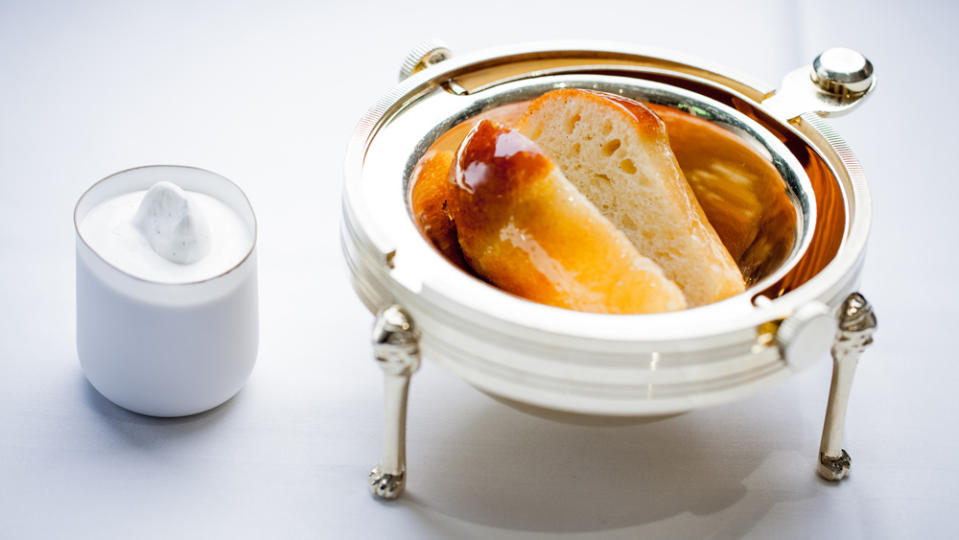
The first hotel restaurant to secure three Michelin stars, Alain Ducasse’s Le Louis XV has become as much a fixture in Monte Carlo as any casino. But the Riviera mainstay has undergone changes in recent years. In 2007 Franck Cerutti assumed the role of executive chef and was joined by Ducasse’s protege, Dominique Lory, in 2011. Then, the space underwent a more physical transformation in 2015, trading its opulent, 19th-century-inspired wall hangings and sculptures for a more modern vision of luxury. Along with it, the menu got a little facelift, moving to even lighter, more nuanced fare. “Creating a menu is like writing good music,” Ducasse told The New York Times. “Loud and strong contrasts with soft and gentle. In a world where people zap away from anything they don’t instantly love or understand, gastronomic luxury happens when a dish is so well conceived it wins the time to seduce with subtlety.”
Le Petit Nice, Marseille
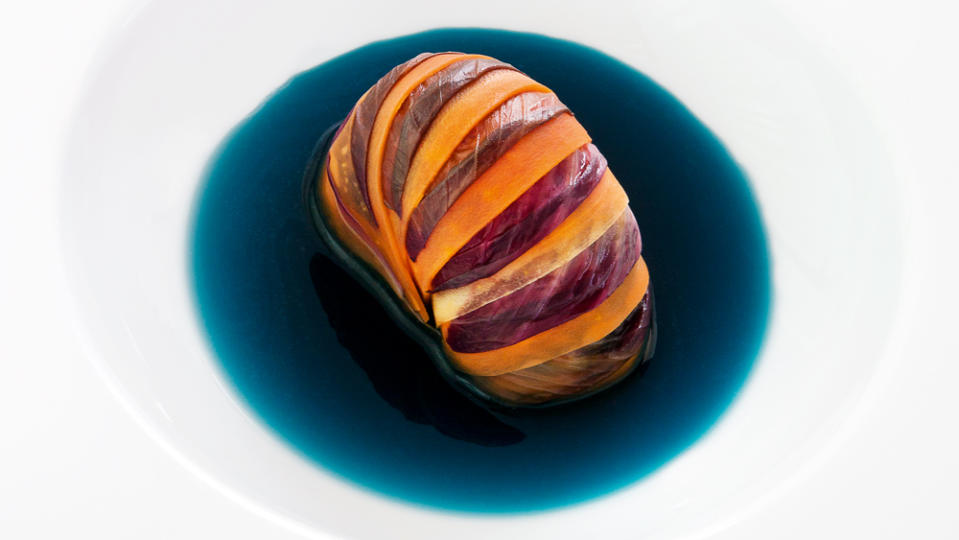
Chef Gérald Passédat says he inherited his taste for beauty and appreciation for things well done from his family of artists and chefs, while he honed his technique in the kitchens of the Troisgros brothers and Michel Guérard. It all came together in 2008 when Le Petit Nice first ascended to three stars. Passédat’s cuisine leans heavily on the abundance of fish in the sea the restaurant overlooks. In a year, he estimates at least 65 different Mediterranean species make their way onto his plates. An updated take on classic bouillabaisse, anemone fritters, seafood carpaccio, and a delicately prepared sea bass named for the chef’s opera star grandmother are a few of the signature dishes that grace Passédat’s menu.
Le Pré Catelan, Paris, 16th Arrondissement

In one respect Frédéric Anton, one of France’s most admired chefs, is an utter failure: As a child he aspired to become a cabinetmaker. Alas, his cabinet-making dreams were put on hold when he began his career as a chef in 1983, and further left in the dust when he proceeded to cook under some of fine-dining’s biggest names—including serving as Jo?l Robuchon’s chef de cuisine. Anton’s impressive pedigree eventually landed him at Le Pré Catelan in 1997, where he earned two Michelin stars by 1999 and was elevated to a third in 2007.
Les Prés d’Eugénie—Michel Guérard, Eugénie des Bains

If one were to erect a Mount Rushmore of French gastronomy, Michel Guérard’s inclusion would be a foregone conclusion. One of the so-called founding fathers of French nouvelle cuisine, Guérard got his first taste of Michelin stardom at Pot-au-Feu, which won its second star in 1971. He opened Le Prés d’Eugénie in 1974, and his cuisine was awarded its first star almost immediately, with a second star arriving in 1975 and a third following in 1977. Today, he’s focused on balancing the hedonistic delights of food with healthy eating.
Maison Lameloise, Chagny
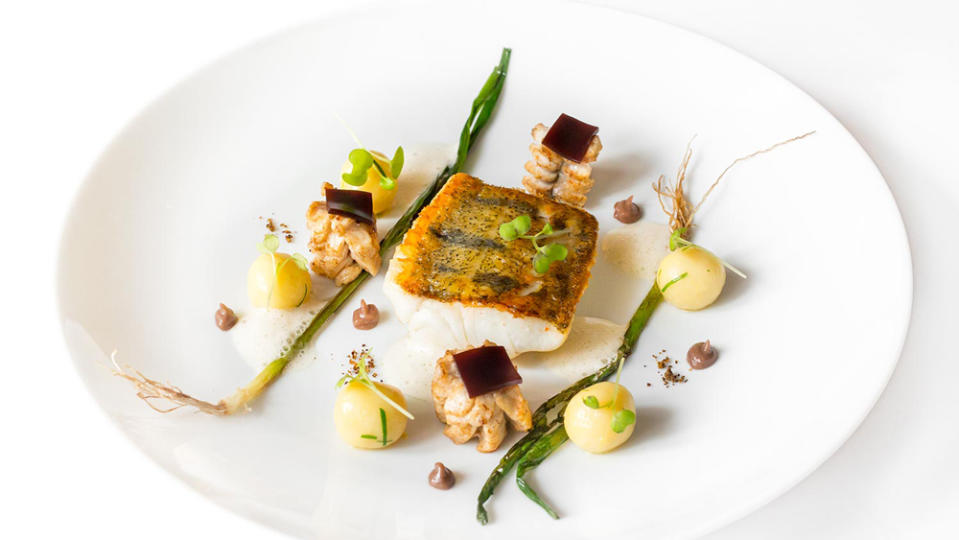
This Burgundian restaurant has been a gastronomic institution since Michelin’s inception. It appeared in Michelin’s very first guide in 1900 and earned its first star in 1926. Maison Lameloise enjoyed its first three-star streak between 1979 and 2004, which picked back up again in 2007. Many of the restaurant’s most successful years occurred under Jacques Lameloise, who took over for his father in 1979. In 2008, Lameloise passed the torch to then up-and-comer Eric Pras, who has kept its three-star rating going strong ever since. Pras has made his mark on the mainstay’s menu with technically precise dishes that put a fresh spin on Burgundian cuisine.
Mirazur, Menton
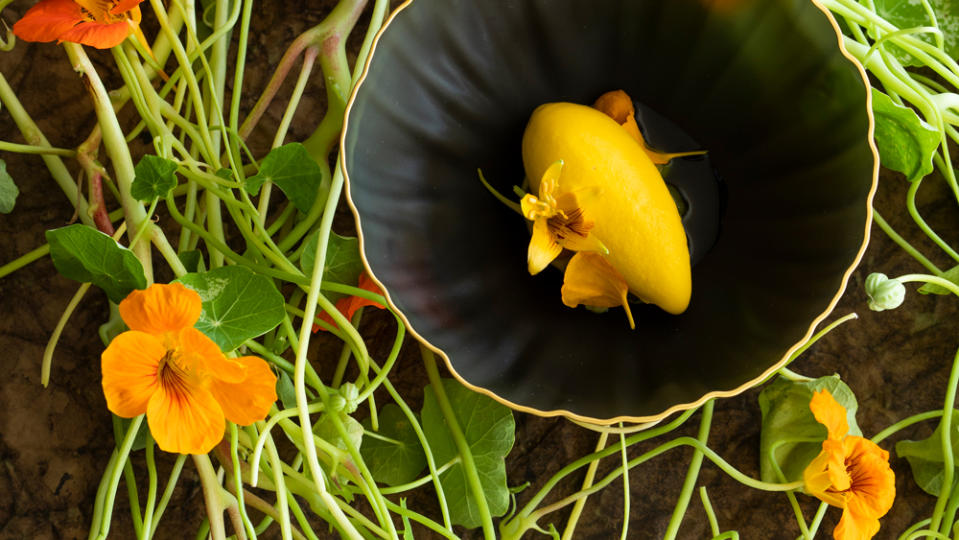
It was a career-defining year for chef Mauro Colagreco in 2019. Mirazur finally ascended to three stars and five months later it World’s 50 Best crowned it the top restaurant in its annual rankings. The chef has cooked at Mirazur in the South of France since 2006 after working with titans Alain Passard and Alain Ducasse. He incorporates ingredients around the French Riviera and merges them with inspiration from his Argentinian-Italian heritage for dishes like squid with artichokes and bagna cauda.
Pic, Valence
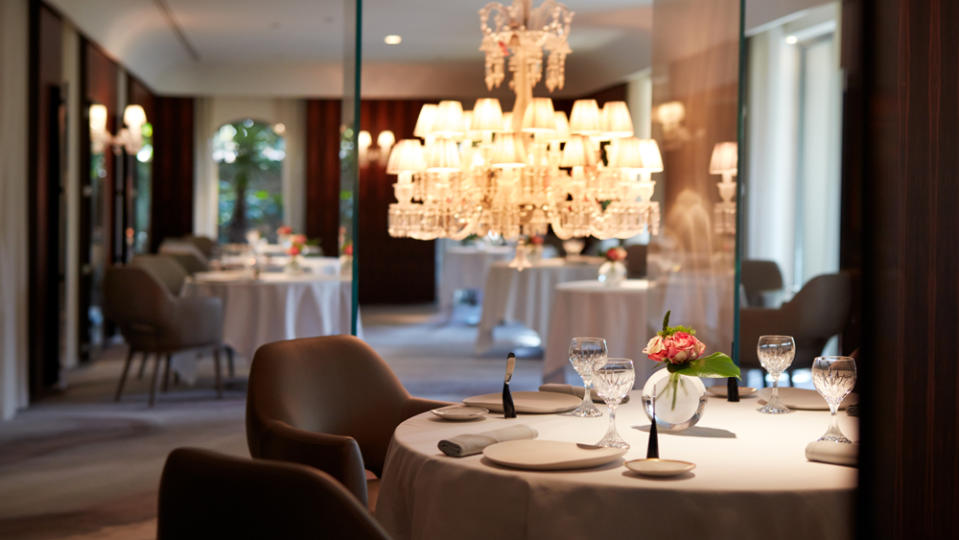
Pic’s Michelin-star-studded history dates back to the early 20th century. Andre Pic opened in Valence in 1935 and earned three Michelin stars by 1939. Later years proved to be rockier, with the restaurant dropping to two stars in 1946 and to one in 1950. Under the leadership Andre’s son Jacques, Pic ascended again to two stars in 1959 and three in 1973, before falling back to two in 1995, just a few years after Jacques’ death. Then, Jacques’s daughter, Anne-Sophie, took over the illustrious dining spot in 1998 with no formal training. Less than a decade later, chef Pic, the only woman in France with three Michelin stars (and just the fourth women ever to receive the honor), restored Pic to three-star glory in 2007. She describes her cuisine as simple, sophisticated and pointedly feminine, which you’ll see reflected in the menu, as well in the decor. “All my emotions are feminine, so I have this feminine way in my cooking. I think some men are able to make very feminine cuisine, but they are perhaps more focused on technique, less on developing the emotional part,” she told CNN in 2012.
Pierre Gagnaire, Paris, 8th Arrondissement
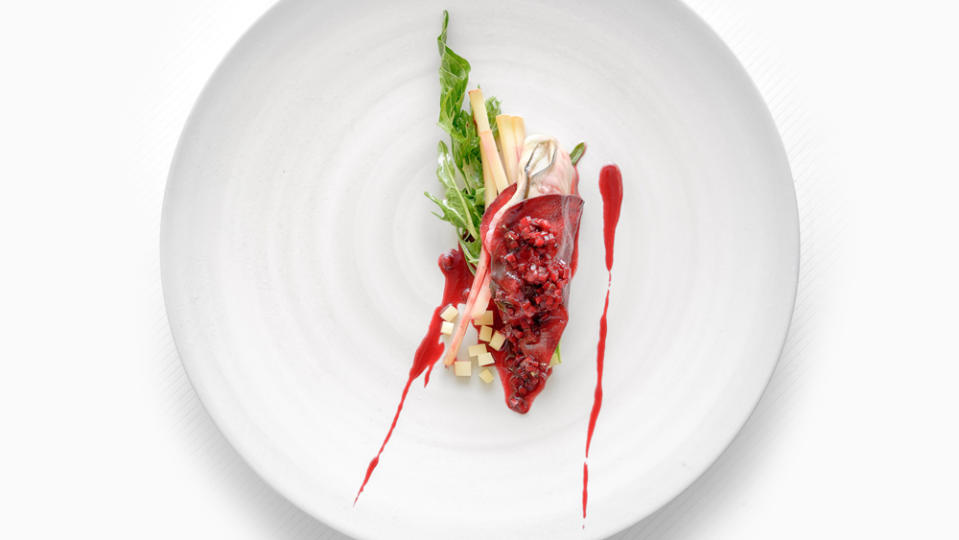
Credited with pioneering the French fusion movement, Pierre Gagnaire’s philosophy in the kitchen is, “tourné vers demain mais soucieux d’hier”—or “facing tomorrow, but respectful of yesterday.” His own culinary past is a mix of formal training and familial connections. Pierre Gagnaire learned the ropes from his Michelin-star-winning chef father, as well as in the kitchens of the highest caliber French chefs of the era, including Paul Bocuse. Gaugnaire took these lessons and started his own restaurant in his hometown of Saint Etienne in 1980, which received three Michelin stars in 1993, but struggled financially. Then, in 1996, Gagnaire opened his eponymous establishment. By 1998 he had his three Michelin stars again.
Plénitude—Cheval Blanc, Paris, 1 Arrondisement
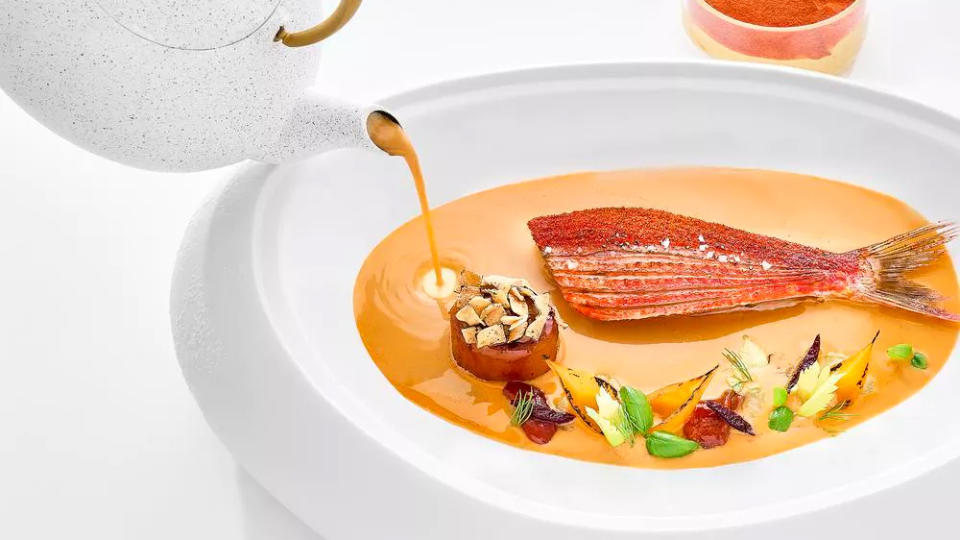
Well, chef Arnauld Donckele wasted no time. For many chefs, bringing their restaurant to the Michelin three-star level can be a career-spanning effort. In Plénitude’s first year of eligibility, the restaurant rocketed to the top of Michelin’s rankings, earning tres etoiles right out of the gate in 2022. Of course, as the chef of three-star La Vague d’Or in Saint-Tropez, Donckele and the guide are quite familiar with each other. Located inside a an LVMH hotel in the heart of Paris, the 26-seat Plénitude connects cuisine from across French regions, drawing inspiration from Normandy, the south of France and Paris. When awarding Plenitude its third star, Michelin called Donckele an “ingenious master creator of sauces,” which is about as high of praise you can give a French toque.
Régis et Jacques Marcon, Saint Bonnet le Froid
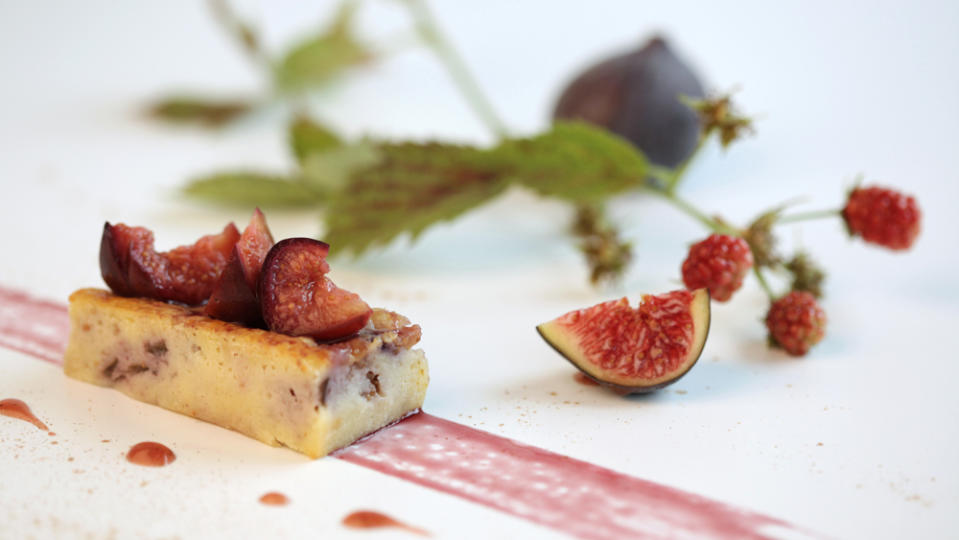
Named for the father-son team that runs the restaurant, Régis et Jacques Marcon offers a seasonal taste of the Haute-Loire region—with a special reverence for the local mushrooms (Régis has even written a book on his beloved champignons). Régis took over his family’s inn in 1979, eventually molding it into the restaurant it is today. He earned his first Michelin star in 1990, his second in 1997, and his third in 2005, just a year after his son, Jacques, joined him in the kitchen.
René et Maxime Meilleur, Saint Martin, Saint Martin de Belleville
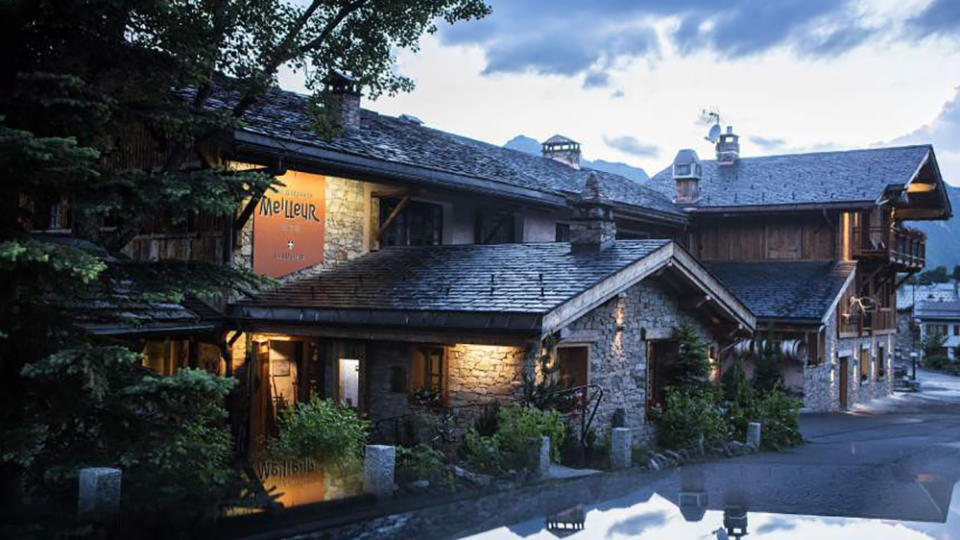
René and Maxime Meilleur, the self-taught, father-son chef duo behind their eponymous restaurant, have been cooking together since 1996. The pair’s cuisine pays tribute to the surrounding Savoie region, with ingredients like crozet pasta, raclette, and Saint Martin goat’s milk, and first earned its third star in 2015. “The dishes are precise, generous and remarkably creative. “La bouitte” may mean small house in the local dialect, but the fare offered by René, Maxime and their spouses is of the highest caliber,” Ellis said when awarding La Bouitte its third star.
Troisgros—Le Bois sans Feuilles, Ouches
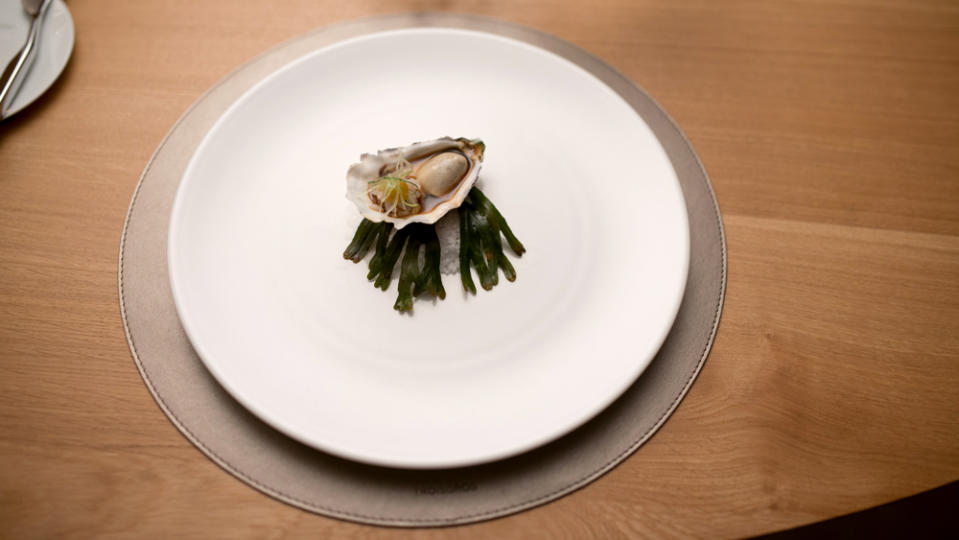
Holding onto its three-star rating for half a century, La Maison Troisgros—and the family dynasty behind it—has long been a driving force in French cuisine. In 1930 Jean-Baptiste Troisgros opened the restaurant near Lyon. Later, his sons Jean and Pierre took the reins, shaping it into the triple-starred establishment it is today with their nouvelle cuisine. Now Pierre’s son Michel runs the empire, alongside his wife Marie-Pierre and son César. César credits the restaurant’s continued success to his mother’s intuition (she’s pioneered much of Troisgros’s growth) and his father’s culinary sensibilities, which César describes as “tangy, vibrant, fresh, and measured.” Meanwhile, as the youngest Troisgros, César brings youthful perspective, flavors inspired by his travels through Spain and California (he also worked at Thomas Keller’s French Laundry), and “a thing for hot peppers.” The dish he says most encapsulates the restaurant’s ethos today is the cosa croquante: a salad made with shaved carrots that have been lightly fried and seasoned with herbs from the family garden.
Best of Robb Report
Sign up for Robb Report's Newsletter. For the latest news, follow us on Facebook, Twitter, and Instagram.